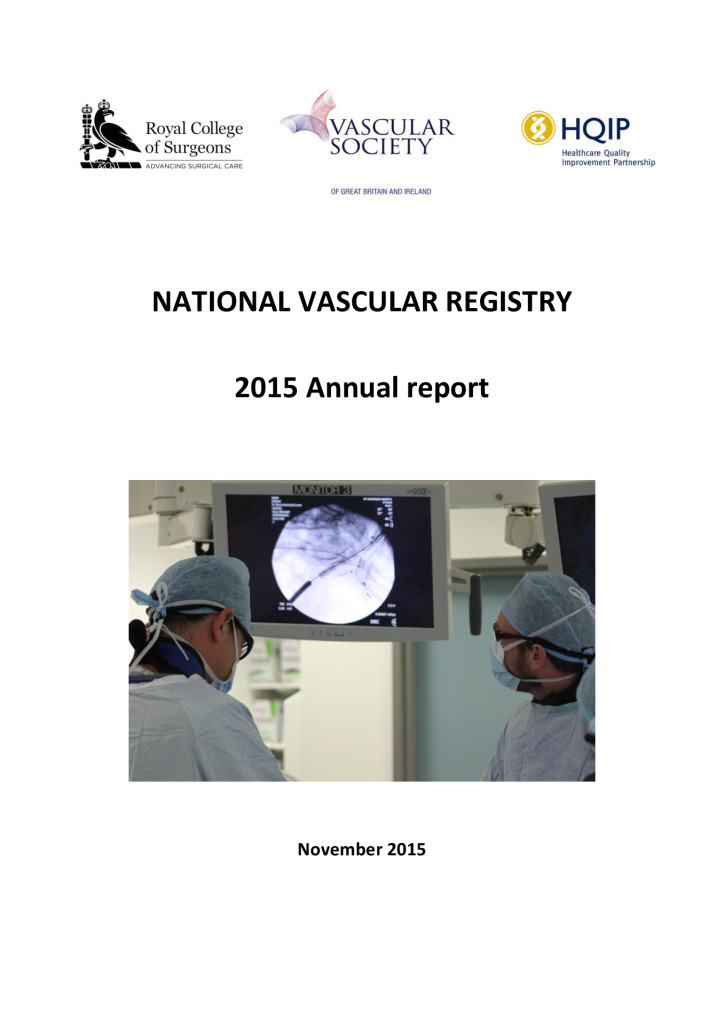National Vascular Registry annual report 2015
The National Vascular Registry annual report 2015 found that more patients survive abdominal arterial surgery but waiting times vary across the country.
Survival rates have increased for patients undergoing a planned operation to treat a potentially fatal condition, due to improvements in the delivery of vascular surgery in the NHS, the national audit of vascular surgery found.
Abdominal aortic aneurysm (AAA) is a life-threatening, but often symptom-free condition. It occurs when a bulge forms in the main blood vessel – the aorta – leading from the heart to the lower half of the body. The disease typically affects the aorta below the kidneys, and is most common in those aged over 65 years and among men. If this bulge ruptures, it causes catastrophic internal bleeding.
Among the 12,000 patients who had an elective, or planned, operation to repair an aneurysm between 2012 and 2014, the proportion who died in hospital after surgery was 1.5%. By comparison, between 2010 and 2012, 2.4% of patients died following surgery to repair an aneurysm.


